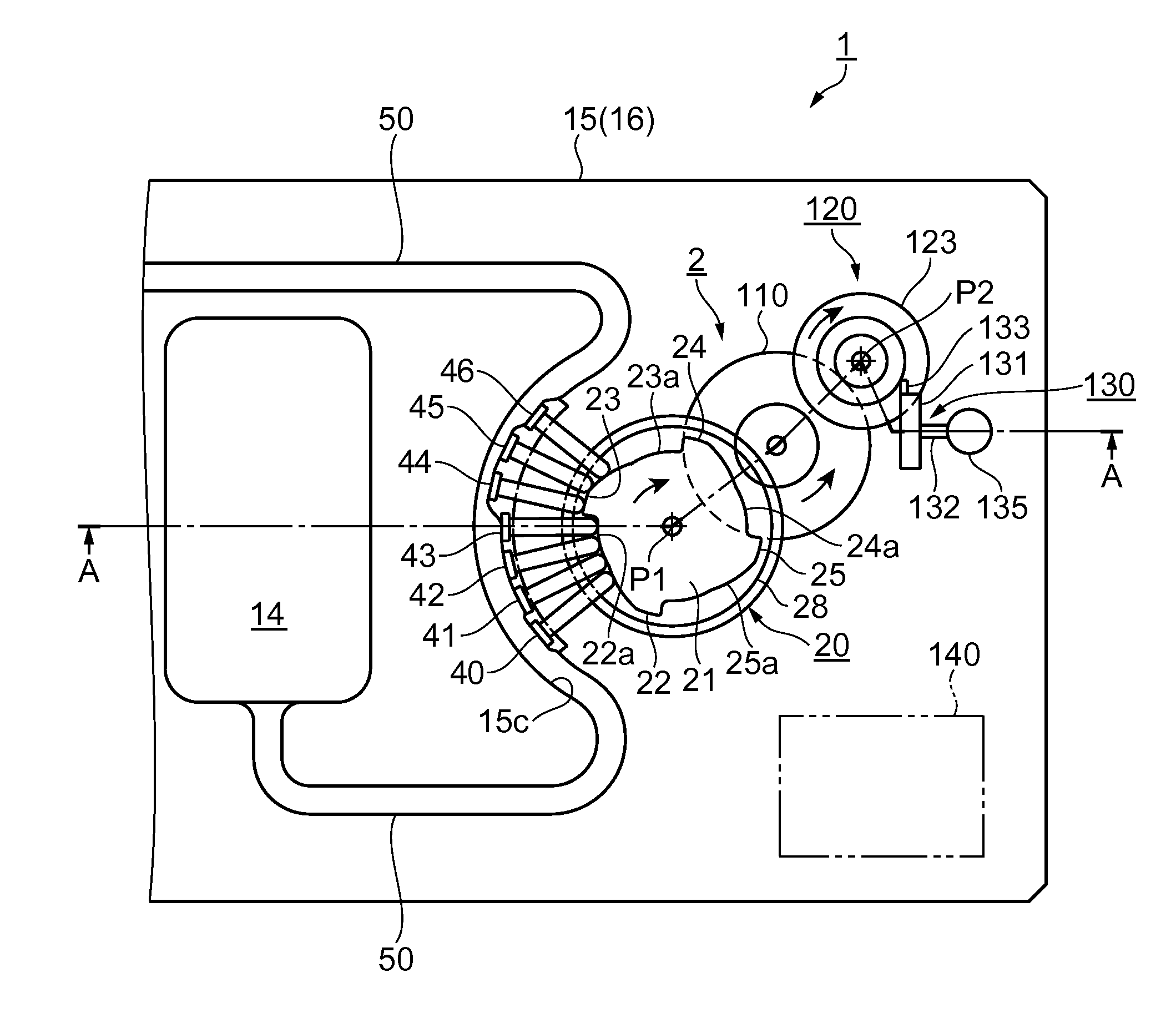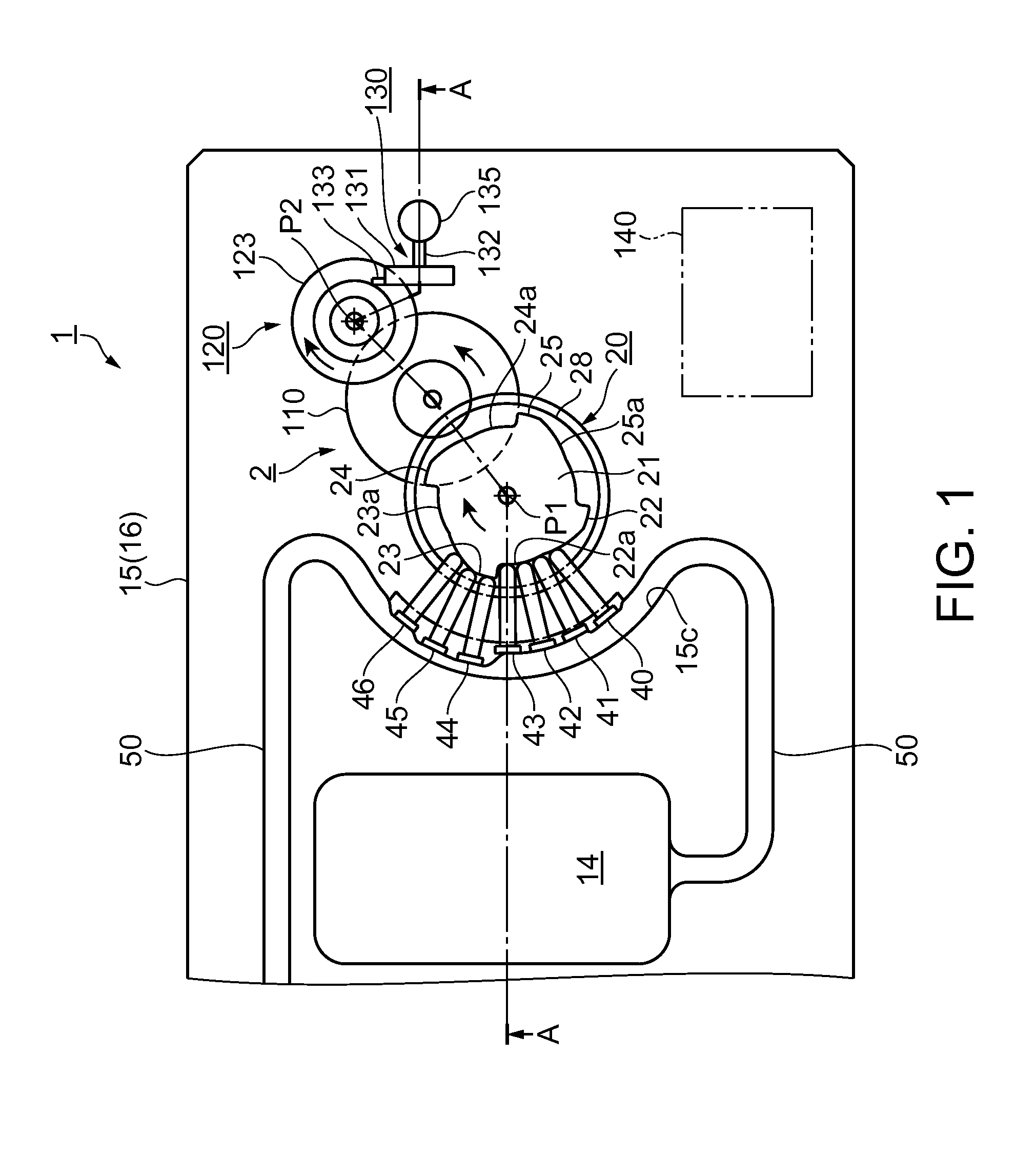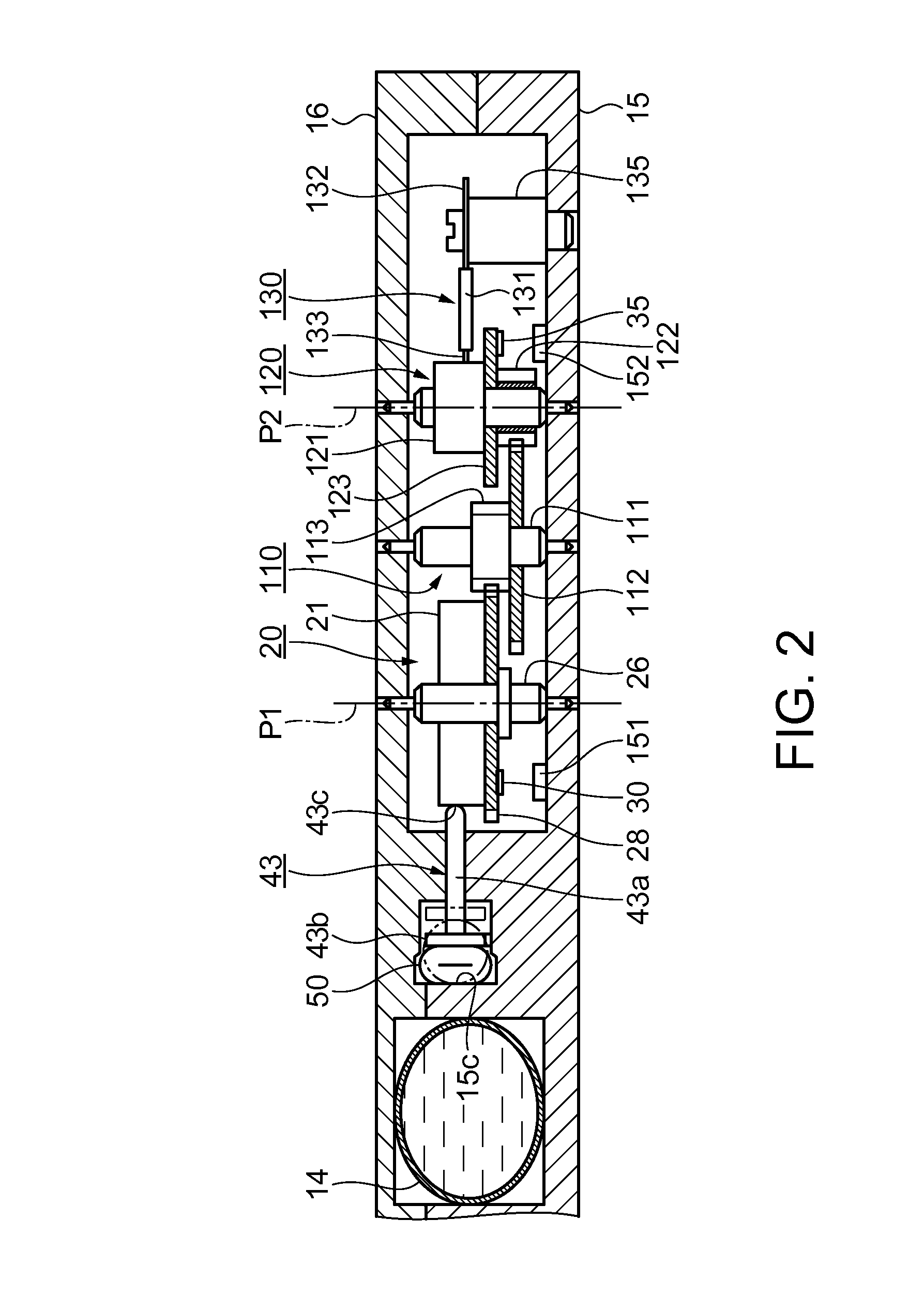Fluid conveying device and driving method for fluid conveying device
a conveying device and fluid technology, applied in the direction of machines/engines, flexible member pumps, positive displacement liquid engines, etc., can solve the problems of rotor rotation angle control units, heavy load, irregular ejection volume,
- Summary
- Abstract
- Description
- Claims
- Application Information
AI Technical Summary
Benefits of technology
Problems solved by technology
Method used
Image
Examples
example 1
[0067]Example 1 is the case where the graph of FIG. 6 showing the relation between the rotation angle of the cam 20 and the cumulative ejection volume is used as a basic form and the cam 20 is rotated at a constant speed.
[0068]FIG. 7 is a graph showing the relation between the driving time of the cam and the cumulative ejection volume. The horizontal axis represents the driving time of the fluid conveying device 1. The vertical axis represents the cumulative ejection volume from the start of the driving.
[0069]FIG. 8 is an explanatory view showing principal steps of the driving method for the fluid conveying device. In this example, the case where an ejection speed for ejecting 6.0 μl by rotating the cam 20 one turn in 60 minutes is provided is described as an example. This example is described along the steps shown in FIG. 8.
[0070]First, the relation between the cam rotation angle of the fluid conveying device 1 as a driving target and the cumulative ejection volume is actually meas...
example 2
[0080]Next, Example 2 will be described. While the above Example 1 is a driving method in the case where the cam 20 is rotated at a constant speed, Example 2 is a driving method in the case where the rotation speed in the constant area J is higher than the rotation speed in the ejection area H. This example will be described with reference to FIG. 7 and FIG. 8. In step S10, the first approximation formula and the second approximation formula are created based on actual measured values, as in Example 1. However, in the constant area J (see FIG. 6), the cam rotation speed is higher, for example, approximately 10 to 20 times higher than in the ejection area H. Therefore, the time in the constant area J is very short. As shown in FIG. 7, a straight line (indicated as line L3) can be formed on an extended line of the first approximation line L1. However, this cannot satisfy the designated ejection speed of 6.0 μl in 60 minutes.
[0081]Thus, to satisfy the designated ejection speed of 6.0 μ...
PUM
 Login to View More
Login to View More Abstract
Description
Claims
Application Information
 Login to View More
Login to View More - R&D
- Intellectual Property
- Life Sciences
- Materials
- Tech Scout
- Unparalleled Data Quality
- Higher Quality Content
- 60% Fewer Hallucinations
Browse by: Latest US Patents, China's latest patents, Technical Efficacy Thesaurus, Application Domain, Technology Topic, Popular Technical Reports.
© 2025 PatSnap. All rights reserved.Legal|Privacy policy|Modern Slavery Act Transparency Statement|Sitemap|About US| Contact US: help@patsnap.com



